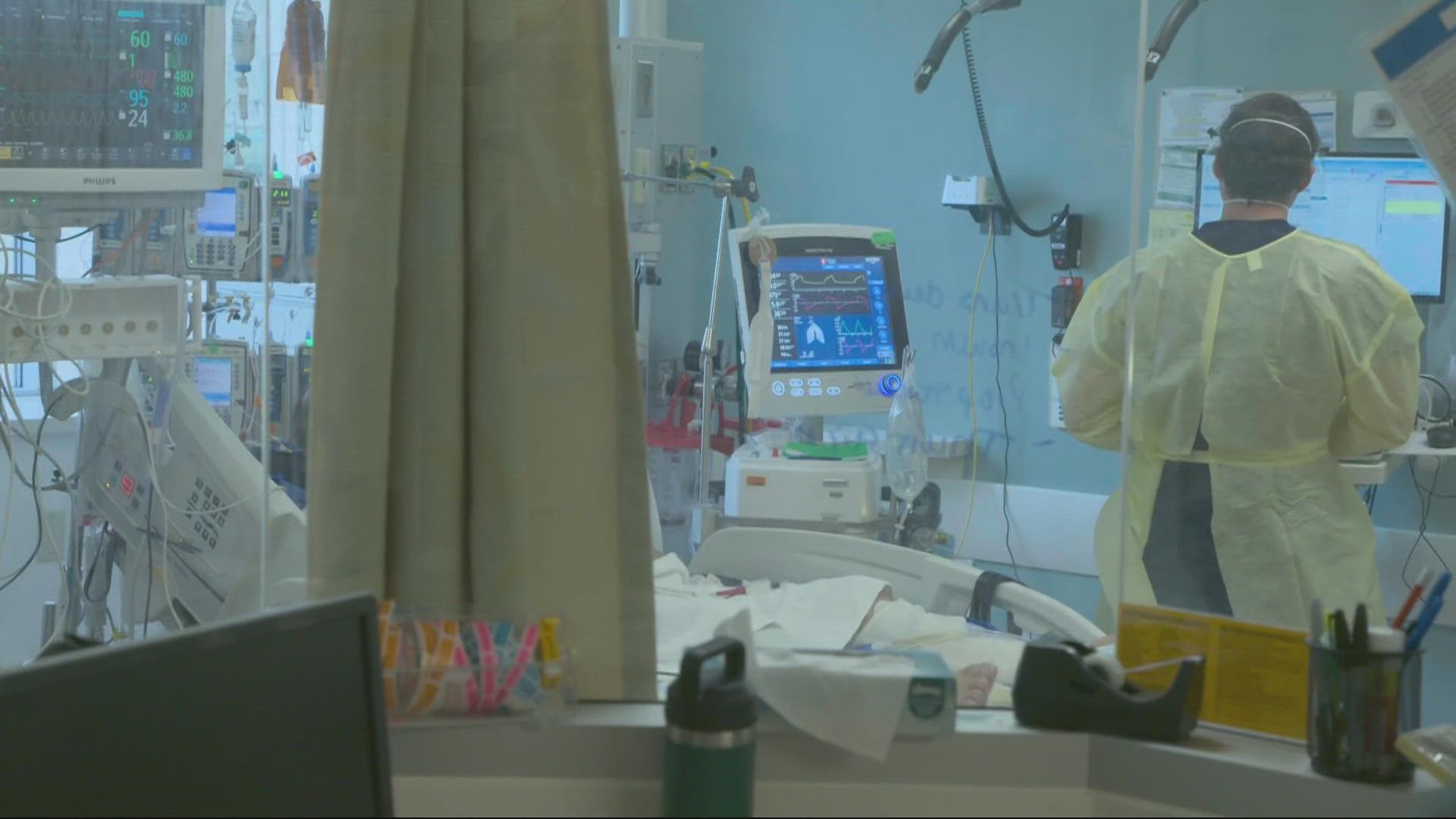SALEM, Ore. — Oregon appears to be near the peak of the omicron wave of COVID-19, but the state is in for another painful week before we get there — and the high hospitalization rate is likely to stick around for a while afterward.
That was the message from state health officer and epidemiologist Dr. Dean Sidelinger at a Friday news conference to discuss the status of the pandemic.
The wave appears to be following the trajectory outlined in forecasts from Oregon Health and Science University, the most recent of which predicted the surge would max out next Tuesday, Feb. 1, with 1,550 hospitalizations statewide.
Oregon had 1,134 confirmed COVID patients in hospitals as of Friday morning, according to Apprise Health Insights, the data subsidiary of the Oregon Association of Hospitals and Health Systems.
That's very close to the current all-time statewide record of 1,178 simultaneous COVID hospitalizations, set on Sept. 1 at the peak of the delta variant wave.
The state has already far eclipsed the pre-omicron record for new daily COVID cases; 3,207 on Aug. 27, a few days ahead of the delta hospitalization peak. Omicron broke that record back in December, and Oregon's daily case count has exceed 10,000 on five days so far this month.
The state's 7-day case average has fluctuated within a range of 7,400 to 8,300 for the past two weeks, although it has trended slightly downward each day this week. That downward trend, although early, appears to be real, Sidelinger said.
“We appear to be at a plateau, maybe slightly decreasing" statewide, he said.
In the Portland area in particular, case rates appear to have leveled off and begun to decline, he said, although they're still rising in other parts of the state. Hospitalization trends tend to lag several days behind case trends, he added, and hospitalization numbers are still rising statewide, including in Portland.
Hospitals are still struggling with staff absences due to COVID and limited supplies of treatments like monoclonal antibodies and antiviral pills, Sidelinger said, although so far none of them have had to activate the crisis care triage standards that the Oregon Health Authority put in place earlier this month.
Hospitalizations will continue to rise for at least the next few days, Sidelinger said, but he added that the peak is still expected to come in the beginning of February and it could be slightly lower than the 1,550 predicted in by OHSU last week — a decrease that he attributed to the steps Oregonians have taken to slow the spread of the virus, such as wearing masks indoors.
Once the state crosses the peak, Sidelinger said he expects to see case rates and hospitalizations drop fairly quickly, mirroring their rapid rise in late December and early January.
Like in previous recent COVID updates, Sidelinger declined to offer a specific metric or timeline to lift Oregon's statewide indoor mask mandate, but he said the decision would be based primarily on hospital capacity, and that the state may be in a position to relax the mask rule in a few weeks or at most about two months.
Watch the full news conference below:

